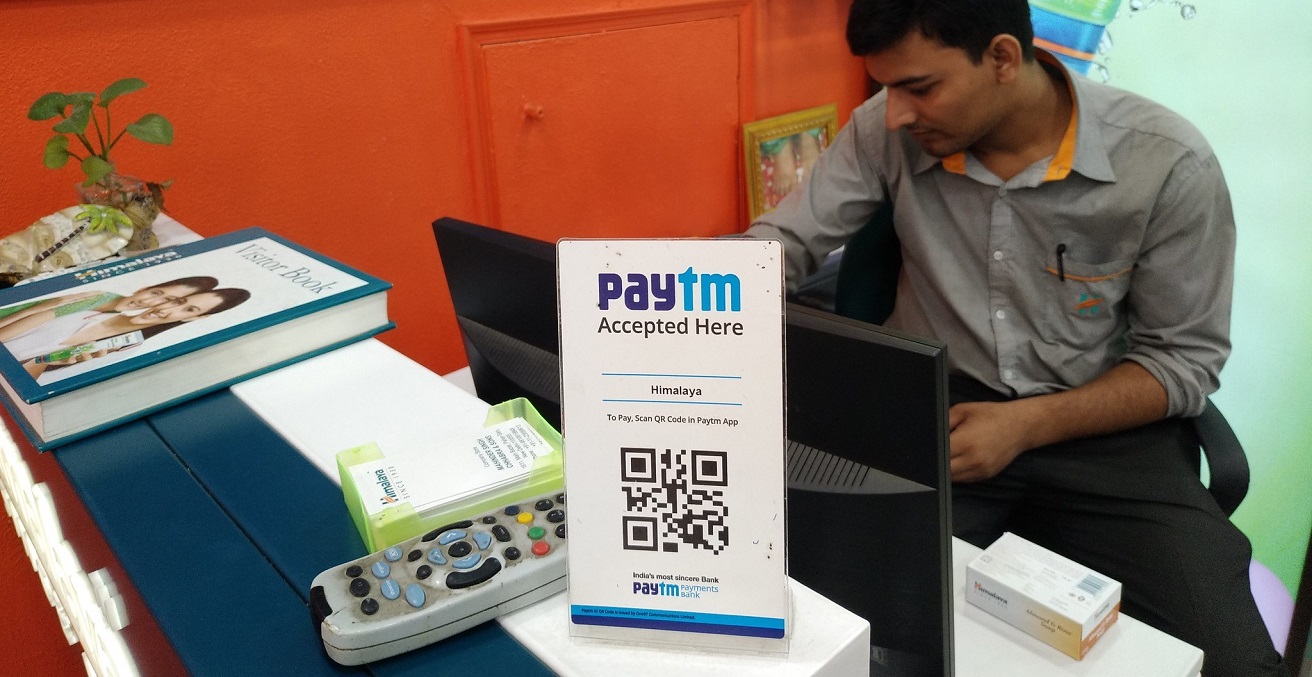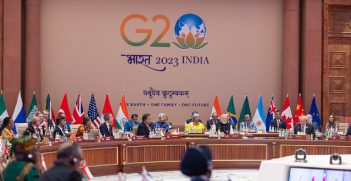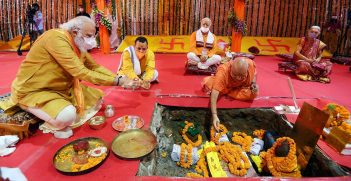The Other Side of Digital India

The digitalisation of India has been widely praised by mainstream Indian media. Yet there are crucial issues with this transformation that are being concealed.
In mid-August this year, the only independently minded news channel that is left in India, NDTV, was subject to a hostile takeover from one of India’s largest conglomerates, the Adani Group. The Adani Group had also recently bid successfully for 5G spectrum, their first foray into the telecom sector. Another major player in India’s petroleum, retail, and the media and telecoms sectors, the Ambanis, have very systematically established vertical and horizontal integrations across numerous media and digital sectors. Both the Adani and Ambani families hail from the same state that the prime minister of India, Narendra Modi – Gujarat. In less than a decade, legacy media in India have steadily capitulated to the interests of the Indian state and to cultivating the personality cult of Modi. There are a handful of online news services, such as the Wire and the Scroll, that are involved in witnessing truth to power, although such services remain an exception and are themselves under intense scrutiny and constant pressure.
In this authoritarian environment, India’s embrace of the digital is celebrated wholly as a success story. There are no failures as per the official version. The many nation-scale projects linked to the flagship Digital India project launched in 2015 – the national biometrics-based ID project, Aadhar, the Unified Payments System, and the Aarogya Setu COVID-19 tracing app, among many other projects – are aimed at transforming India into a knowledge economy and all Indians into cashless customers in a connected, integrated, paperless, e-country. The statistics are astounding – millions connected and involved in billions of digital transactions in what seems to be fintech heaven. While there is no denying that urban and rural connectivity has grown by the millions, the exact figures are disputed, and there is little availability of verifiable data on numbers, audiences, customers, subscribers – as I have discovered working on data on media concentrations in India as part of a global project on global media concentrations. The same goes for data on poverty, the gross domestic product (GDP), and unemployment – all of which have now been captured and massaged by state actors and dutifully reported on by the media. These stories suggest that India has turned the corner from being a basket-case to becoming a global power and an aspirational superpower.
While evidence of growth and productivity, transactional efficiencies, and connectivity dividends are indisputable, at moments of national crisis – such as COVID-19 – the scale of the divide between the haves and have nots in India was rudely exposed. The world witnessed the scale of COVID-19 deaths in the north Indian state of Uttar Pradesh. Those who had smart phones were able to access information on the availability of oxygen and ventilators in local hospitals, while those that did not could not prevent the death of loved ones. Schoolchildren in India who had internet connection and access to smart phones were able to continue their education during the COVID-19 lockdowns, while those who were unconnected could not. And of course, true to script, the government defended its tally of half a million COVID-19 deaths against the three million reported by the World Health Organization (WHO) and other fact checkers.
I think one issue is that ever since the success of India’s software industry, the narrative of technological determinism has been embraced by successive governments. As long as people have access to Jio mobile phones and connectivity, can do mobile banking, and can buy products online, the country, according to the official narrative, is doing well. The media report gushingly on the billions of online transactions made by Indian customers and the efficiencies of online payment architectures and interfaces such as UPI and PayTM. Never mind that the proposed Personal Data Protection Bill (2019), modelled on the European Union’s General Data Protection Regulation (GDPR), was withdrawn by the government in August 2022, the exact month that a data breach of the personal details of 288 million Indians at the Employees Provident Fund Organisation occurred. Data protection and privacy safeguards can be dispensed with or delayed, although the government’s launch of the Open Network for Digital Commerce earlier this year – a level playing field for e-commerce companies simply could not.
The digital “othering” of minorities, in particular Muslims, has been relentless. They have been blamed for COVID-19, for historical slights, and for contemporary deficits. Government censorship and internet shutdowns are routine in parts of India that have been deemed “disturbed,” including Kashmir and almost the whole of North-East India where the Armed Forces Special Powers Act (1958) is being used to coerce citizens deemed “anti-national.” Attempts to dilute secular India and replace it with a muscular, Hindu nationalist version of India have been relentless – and the digital space has been recruited for achieving this vision. Caste, religion, and other markers of identity have come to define Indian identity – a project that is being shaped by alt.media sites, officially supported trolls, right-wing news outlets, shock jocks, and social media influencers.
Thankfully though, there are sites such as the People’s Archive of Rural India (PARI), news services as the Wire, and magazines such as The Caravan that offer non-partisan accounts of both anybody’s guess as to whet Digital India in the context of Real India, its challenges and opportunities, its failures and successes, and that have exposed the gaps between aspirational goals and institutional performance. While there certainly has been an increase in audiences for these media outlets, it is anybody’s guess as to whether they can survive the challenges facing independent media in India today.
Pradip Ninan Thomas is at the School of Communication & Arts, University of Queensland. He has published extensively on the political economy of communications in India. His latest book is Information Infrastructures in India: The Long View (2022), Oxford University Press.
This article is published under a Creative Commons Licence and may be republished with attribution.





